Building standards performance framework: April 2021
Key performance outcomes used to monitor the work of building standards local authority verifiers.
Annex B: Annual Verification Performance Report Template
6. Key Performance Outcome 7 – Annual Verification Performance Report Template
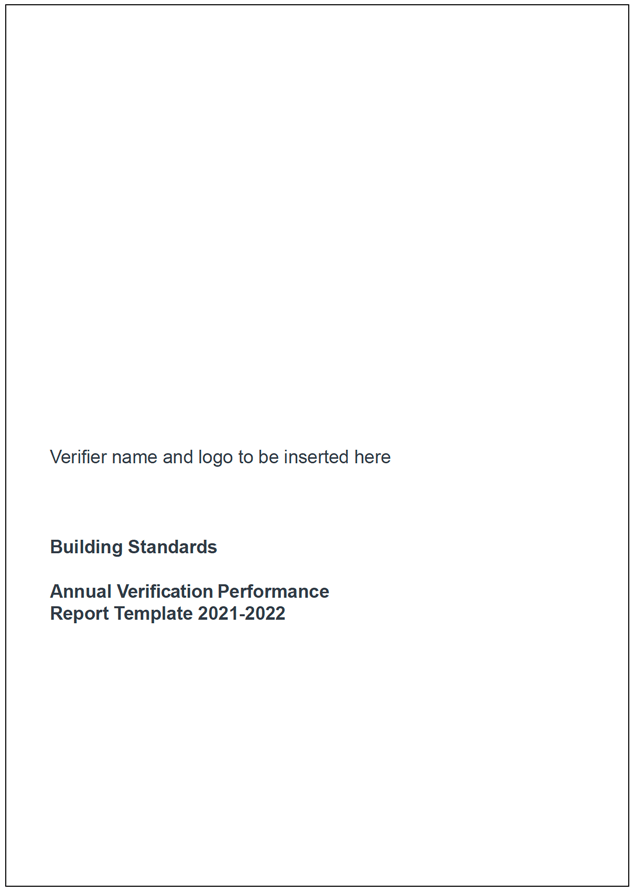
Table of Contents
1. Introduction to the Verifier
2. Building Standards Verification Service Information
3. Strategic Objectives
4. Key Performance Outcomes and Targets
5. Performance Data
6. Service Improvement and Partnership Working
7. Building Standards – Additional Data
[Verifier to insert page numbers]
1. Introduction to the Verifier
As part of the new performance framework, it has been agreed that all verifiers must produce an annual verification performance report on the agreed template. It should be placed on the verifier website and the link submitted to Scottish Government as part of quarterly reporting against KPO7. The following sections detail the minimum information and standard paragraphs that should be included throughout the performance report.
The information on each of the bullets listed below should also be included in the introduction section.
- Standard statement (see below for wording)
- Size of the local authority by population and geographical size
- Map of the area
- Description of the physical environment – mainly rural, urban, mixture of both and concentration of population in urban vs. rural areas
- The major employers and main employment sectors
- The full range of responsibilities the local authority building standards service delivers
- Organisational chart of the verifier (CEO to BSM level – see example below)
Standard statement:
The report should contain the following paragraph in the introduction section:
The verification performance report is a strategic planning and management tool that provides information about the local authority building standards service, communicates the vision and strategy, and sets out performance against strategic goals and targets.
Building standards verifiers in Scotland are required to utilise the performance report to manage, monitor, review and develop strategies for their business, and should focus on the performance framework's core perspectives and cross-cutting themes.
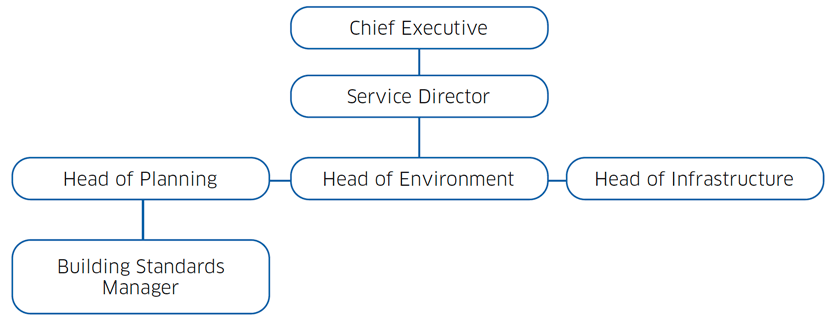
2. Building Standards Verification Service Information
This section should include the following information:
1. Location of office (if the department is located in one office or across separate offices, if so a description of allocation of provision is required here);
2. Verification services and functions delivered;
3. Public interest statement (listed below);
4. Organisation chart (BSM and below) which should include vacant and occupied positions and job titles. Chart should include links into other departments that work closely with building standards verification e.g. planning (see example below).
Public Interest Statement:
All performance reports should contain the following statement:
The purpose of the building standards system is to protect the public interest. The system sets out the essential standards that are required to be met when building work or conversion of a building takes place in order to meet building regulations.
The building standards system checks that proposed building work or conversion of a building meets standards; inspections are limited to a minimal necessary to ensure that legislation is not avoided. The control of work on site is not down to the system but is a matter for contracts and arrangements in place between a builder and client.
Verifiers, appointed by Scottish Ministers, are responsible for the independent checking of applications for building warrants to construct or demolish buildings, to provide services, fittings or equipment in buildings, or for conversions.
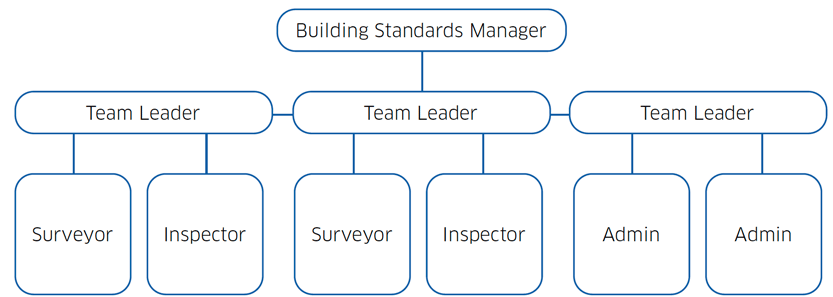
All reports should include a snapshot of the staffing position.
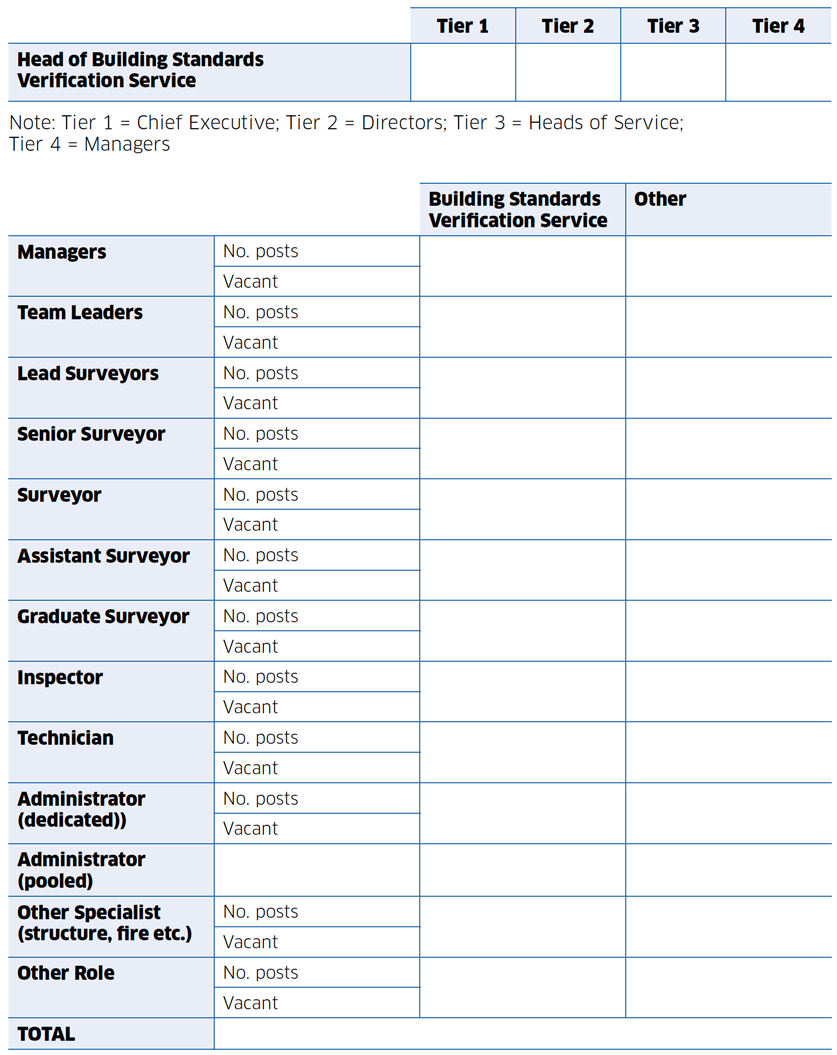
Note: Managers are those staff responsible for the operational management of a team/division. They are not necessarily line managers.
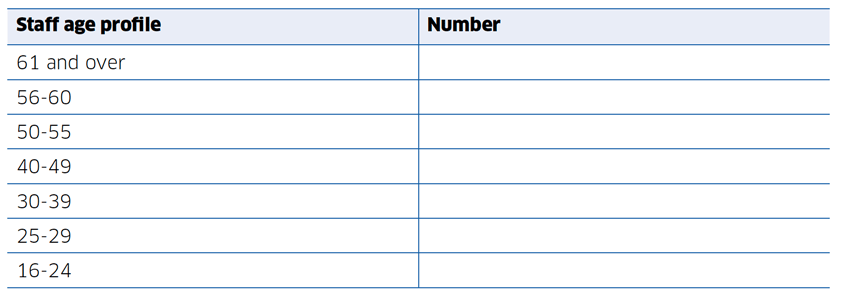
3. Strategic Objectives
This section should include a short narrative covering the following bullets under each of the headings
1. The overarching goal/vision of the service;
2. Departmental issues to be addressed in the coming year;
3. The key strategic objectives for the coming year (should align with continuous improvement plan).
4. Key Performance Outcomes and Targets
The national verification performance framework is based on three core perspectives:
- Professional Expertise and Technical Processes;
- Quality Customer Experience; and
- Operational and Financial Efficiency.
There are also three cross-cutting themes, comprising:
- Public interest;
- Continuous improvement, and;
- Partnership working.
Summary of Key Performance Outcomes (KPOs)
Professional Expertise and Technical Processes
KPO1
Minimise time taken to issue a first report or issue a building warrant or amendment to building warrant.
KPO2
Increase quality of compliance assessment during the construction processes
Quality Customer Experience
KPO3
Commit to the building standards customer charter
KPO4
Understand and respond to the customer experience
Operational and Financial Efficiency
KPO5
Maintain financial governance
KPO6
Commit to eBuilding Standards
KPO7
Commit to objectives outlined in the annual verification performance report
Summary of Key Performance Targets
KPO1 Targets
1.1 95% of first reports (for building warrants and amendments) issued within 20 days – all first reports (including Building warrants and amendments issued without a first report).
1.2 90% of building warrants and amendments issued within 10 days from receipt of all satisfactory information – all building warrants and amendments (not including Building warrants and amendments issued without a first report).
KPO2 Targets
Targets to be developed as part of future review of KPO2.
KPO3 Targets
3.1 National customer charter is published prominently on the website and incorporates version control detailing reviews (reviewed at least quarterly).
3.2 95% of BSD requests for information on a BSD 'Verifier Performance Reporting Service for Customers' case responded to by verifier within
5 days.
KPO4 Targets
4.1 Minimum overall average satisfaction rating of 7.5 out of 10.
KPO5 Targets
5.1 Building standards verification fee income to cover indicative verification service costs (staff costs plus 30%).
KPO6 Targets
6.1 Details of eBuilding Standards to be published prominently on the verifier's website.
6.2 75% of each key building warrant-related process being done electronically:
- Plan checking
- Building warrant or amendments (and plans) being issued
- Verification during construction
- Completion certificates being accepted
KPO7 Targets
7.1 Annual verification performance report published prominently on website with version control (reviewed at least quarterly).
7.2 Annual verification performance report to include performance data in line with KPOs and associated targets (annually covering previous year e.g. April 2020 – March 2021).
5. Performance Data
This section should include a summary of performance against all KPOs and performance targets, as well as an accompanying narrative.
Professional Expertise and Technical Processes
[Performance under this perspective might consider:
- Protocols for dealing with work
- Performance management systems
- Training and development/CPD
- Benchmarking/shared services
- Succession planning]
Quality Customer Experience
[Performance under this perspective might consider:
- Customer communication strategies
- Customer Charter
- Customer feedback (national/local), analysing and changes to systems
- Accessibility of service
- Pre-application advice
- Customer agreements
- Customer dissatisfaction (procedural or technical)
- Recognised external customer service accreditations]
Operational and Financial Efficiency
[Performance under this perspective might consider:
- Team structures e.g. (area splits/specialist teams)
- Time recording system
- Financial monitoring/governance
- IT systems
- Digital services
- Finance systems
- Internal communication strategies]
6. Service Improvements and Partnership Working
This section should include a summary of service improvements and examples of partnership working performance against all KPOs and performance targets.
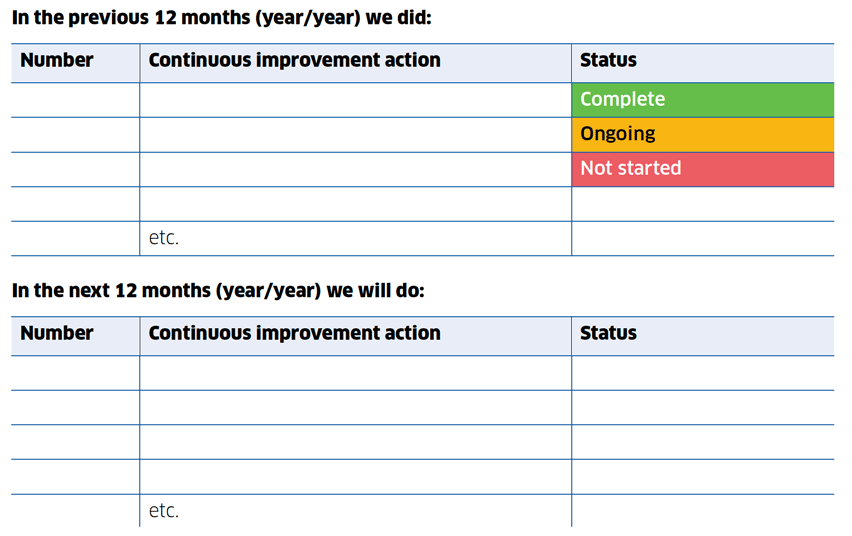
In the previous 12 months (year/year) we worked with:
[Include examples of partnership working]
In the next 12 months (year/year) we will:
[Include examples of partnership working e.g.
- engagement with other local authorities and groups, e.g. Local Authority Building Standards Scotland (LABSS)
- engagement with external stakeholder organisations and groups
- external support for local training and development/CPD
- commitment to work together on technical issues]
7. Building Standards – Additional Data
Verifiers provide returns to Scottish Government on their verification performance and workload. The performance data relates to the building standards verification performance framework and the workload data relates to the numbers of building warrant applications; completion certificates; fees; costs; certificates (certification, energy performance; sustainability); enforcement cases.
Building warrants and amendments to building warrant:
- Applications;
- Decisions.
Completion certificates:
- Submissions;
- Decisions.
Certification:
- Certificates of design submitted;
- Certificates of construction submitted.
Energy Performance Certificates (EPCs):
- Copy certificates received (domestic);
- Copy certificates received (non-domestic).
Statements of Sustainability:
- Copy certificates received (domestic);
- Copy certificates received (non-domestic).
Enforcement:
- Notices served under sections 25 to 30;
- Cases referred to Procurator Fiscal;
- Cases where LA has undertaken work.
Contact
Email: buildingstandards@gov.scot
There is a problem
Thanks for your feedback